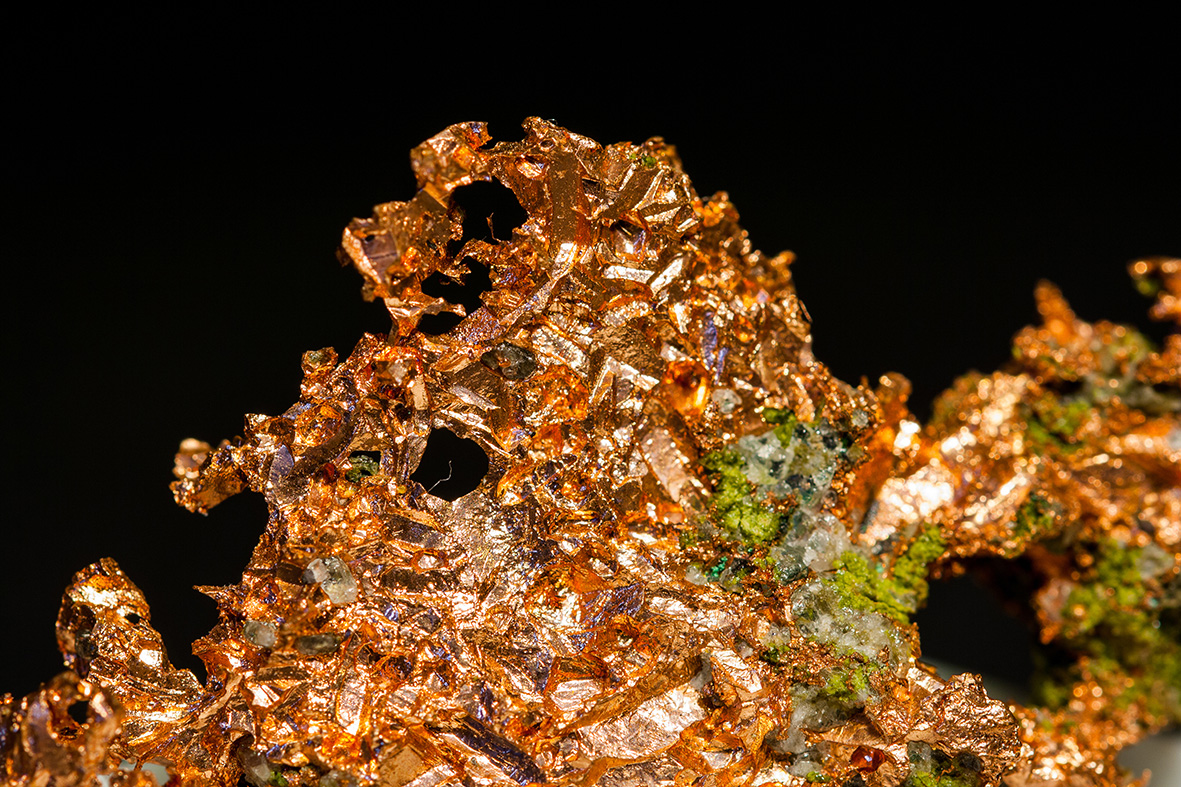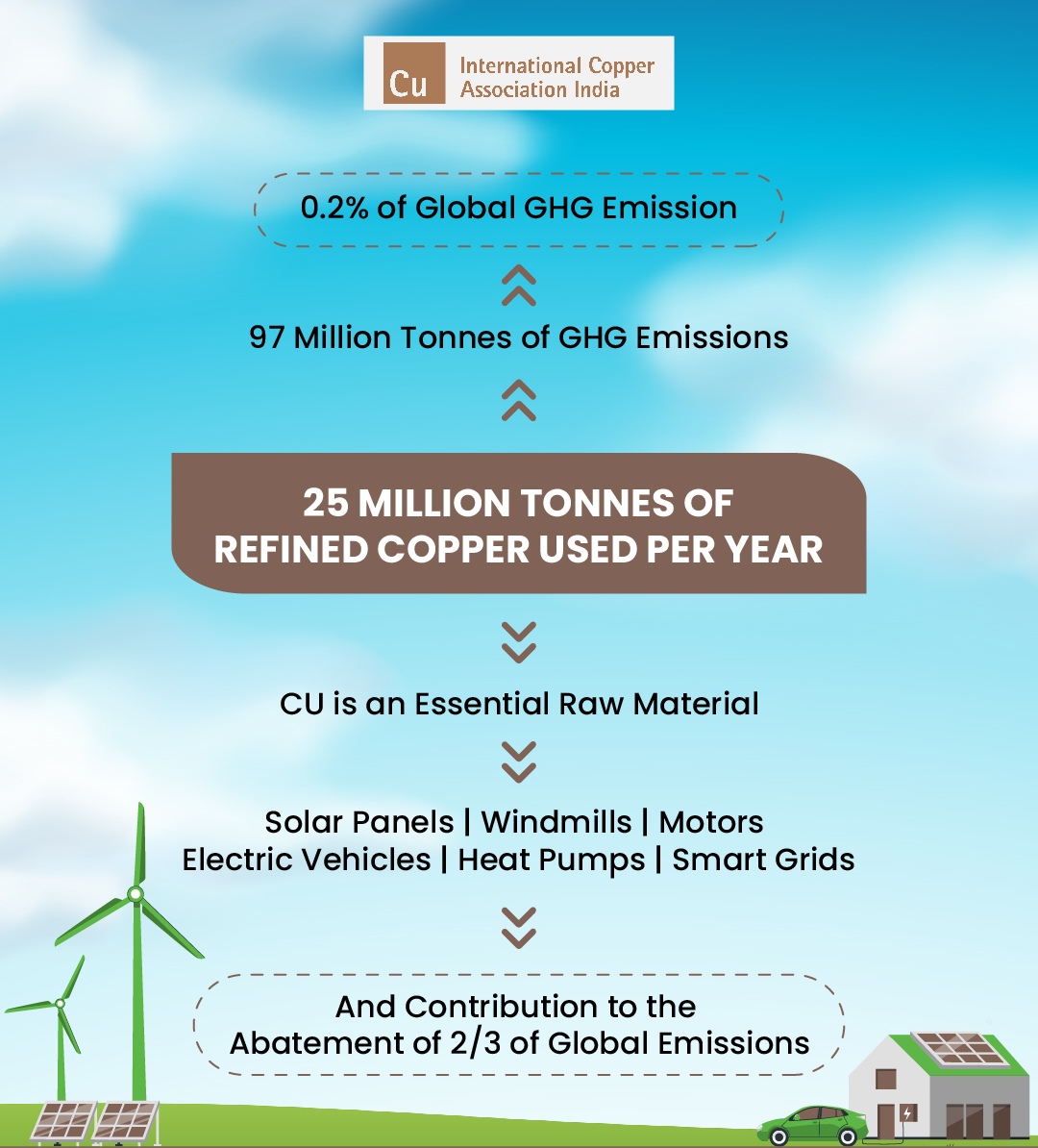Copper: The Essential Metal for India’s Green Growth
As emphasized during the COP26 summit, the world is increasingly focused on achieving Net Zero emissions to combat climate change. Global leaders recognized the urgency of limiting temperature rise to below 1.5°C, reducing dependence on fossil fuels, and accelerating the transition to clean energy.
India, as a responsible global player, is committed to these climate goals. The country has set an ambitious target to achieve Net Zero by 2070 and has outlined a comprehensive Panchamrit Climate Action Plan to drive this transition. This includes increasing non-fossil fuel energy capacity, reducing emissions intensity, and expanding the use of renewable energy.
As India balances economic growth with sustainability, copper will play a key role in enabling clean energy, electric mobility, and energy efficiency—supporting the nation’s vision for a greener future.
India’s Panchamrit Climate Action Plan: Progress & Challenges
India’s Panchamrit Action Plan is a five-point strategy aimed at tackling climate change while ensuring economic development. (2) The key targets include:
- Achieving 500 GW of non-fossil fuel energy capacity by 2030
- Meeting 50% of total energy requirements through renewables by 2030
- Reducing total projected carbon emissions by 1 billion tonnes by 2030
- Lowering carbon intensity by 45% over 2005 levels
- Achieving net-zero emissions by 2070
As of January 20th, 2025, India’s total non-fossil fuel energy capacity stands at 217.62 GW. However, to reach net-zero emissions, the adoption of clean technologies must accelerate—and copper plays a crucial role in this transformation.
Copper: The Foundation of India’s Green Transition
1.Copper’s Contribution to Green Technologies
As per industry estimates, copper contributes just 0.2% to global greenhouse gas (GHG) emission, but it contributes to two-third of solutions abetting these emissions.
Copper is a key enabler of decarbonization, widely used in:
Renewable Energy – Copper is essential for solar panels, wind turbines, and energy storage systems.
Electric Vehicles – Copper enhances performance in EV batteries, motors, and charging infrastructure
Energy Efficiency – Copper improves the efficiency of electric motors, HVAC systems, and power transmission
Circular Economy – Copper is 100% recyclable without losing its quality, reducing environmental impact
2.Copper in Renewable Energy
As all the countries evaluate ways to reduce dependence on fossil fuels, it is crucial to highlight the role of copper as a metal in achieving the targets of reducing carbon footprints. Copper’s role in combating the issue of rising global temperatures is often underestimated. The metal, largely used in wiring and motors, is also an excellent material to increase electrical efficiency and thereby, reduce emissions.
According to industry estimate, for every tonne of copper used in renewable energy systems, can abate carbon emissions of ~11,400 T in 450 kW solar plant and ~14,600 T in 360 kW wind plant over their lifetime respectively.
Solar Power – The ground-mounted solar systems require ~2T of copper per MW, primarily used in wiring, cabling, and other essential components.
Wind Energy – The wind power system requires ~4T per MW for generators, cables, and transformers.
Energy Storage – Copper is integral to battery storage systems, ensuring grid stability.
3.Copper in Electric Vehicles (EVs)
Sustainable mobility is at the heart of India’s efforts to reduce carbon emissions, and electric vehicles (EVs) play a pivotal role in this transition. With India’s EV market booming, the government of India has initiated many schemes and policies like FAME-II, the Production Linked Incentive (PLI) Scheme, and the Battery Swapping Policy. These initiatives are accelerating EV adoption by offering financial incentives, enhancing charging infrastructure, and promoting domestic manufacturing under the Make in India initiative.
India has set ambitious EV sales targets—30% for private cars, 70% for commercial vehicles, and 80% for two- and three-wheelers by 2030—aligning with its net-zero goal by 2070. And when it comes to net-zero goal of India, copper plays an important role here. On average, an electric car requires 68 kg of copper as compared to 13 kg required by a conventional car. (4) Copper is a crucial component in EVs, used extensively in batteries, motors, and wiring due to its superior conductivity and durability
It is essential in:
EV Batteries & Motors – Copper windings improve efficiency in lithium-ion batteries and high-performance motors.
EV Charging Infrastructure – Copper cables enable fast and efficient charging with minimal energy loss.
Power Distribution – As EV adoption grows, robust electrical grids will require copper conductors for reliability.
4.Copper in Energy Efficient Technology
The less energy used; the lesser energy wasted. Energy efficiency is about using less energy to achieve the same output, reducing waste and costs. This can be done by upgrading appliances, improving insulation, and optimizing industrial processes. For example, energy-efficient appliances consume less electricity without affecting performance. These measures not only save money but also lower greenhouse gas emissions. According to the IEA, improving energy efficiency could cut global emissions by 40%. (8)
- HVAC systems – Copper tube-based air conditioning improves energy efficiency, works well with green refrigerants and are reliable & durable
- Transformers – Copper-wound transformers enhance energy efficiency by reducing transmission losses and improving power reliability.
Conclusion: Copper at the Heart of India’s Green Growth
As India advances towards its net-zero targets, copper will be the foundation of a sustainable and energy-efficient future. Its role in renewable energy, electric mobility, and energy-efficient motors makes it a key enabler of decarbonization.
Every kilogram of copper in use today is a sustainable resource for the future. By scaling up copper production, investing in recycling, and promoting energy efficiency, India can accelerate its green transition while ensuring long-term economic resilience.
Copper isn’t just a metal—it’s the key to a cleaner, greener, and more sustainable India.
References:
1. https://www.indiatoday.in/environment/story/india-faces-mounting-climate-crisis-60-million-at-risk-from-rising-sea-level-2598449-2024-09-12
2. https://pib.gov.in/PressReleaseIframePage.aspx?PRID=1961797
3. https://copperpathwaytozero.org/
4. https://internationalcopper.org/wp-content/uploads/2017/06/2017.06-E-Mobility-Factsheet-1.pdf
5. https://copperindia.org/wp-content/uploads/2024/12/ICA-India-Annual-Copper-Demand-Study-Infographic-FY24.pdf
6. https://government.economictimes.indiatimes.com/amp/blog/copper-holds-the-key-to-indias-sustainable-growth-it-is-critical-to-secure-the-supply-chain/116540840
7. https://www.thehindubusinessline.com/opinion/coppers-role-in-indias-solar-wind-energy-plans/article68837911.ece
8. https://www.clasp.ngo/updates/energy-efficiency-missing-at-cop29/#:~:text=Energy%20efficiency%20is%20a%20climate%20solution%20we%20can’t%20ignore&text=According%20to%20the%20IEA%2C%20improving,The%20benefits%20are%20not%20hypothetical.



